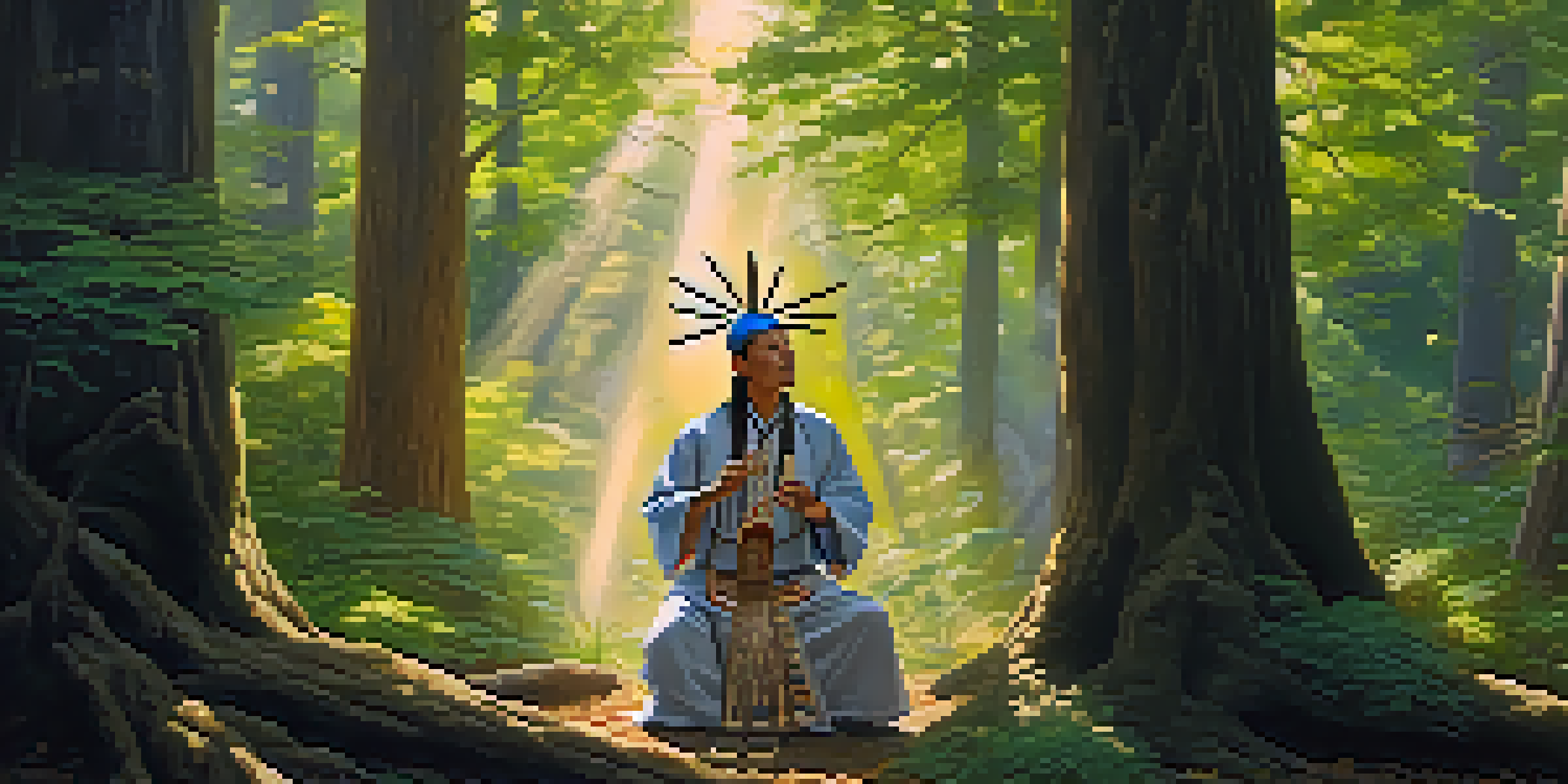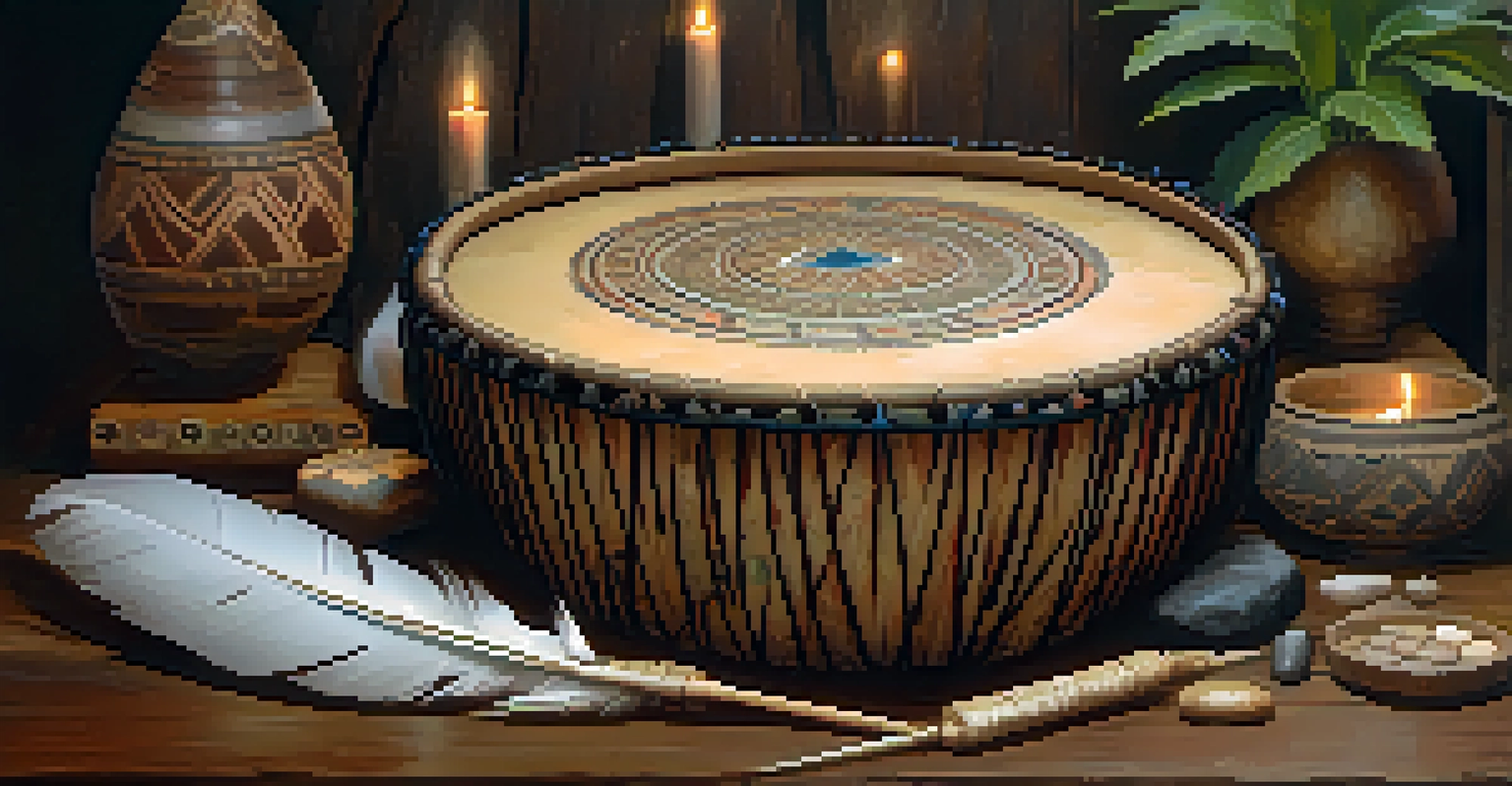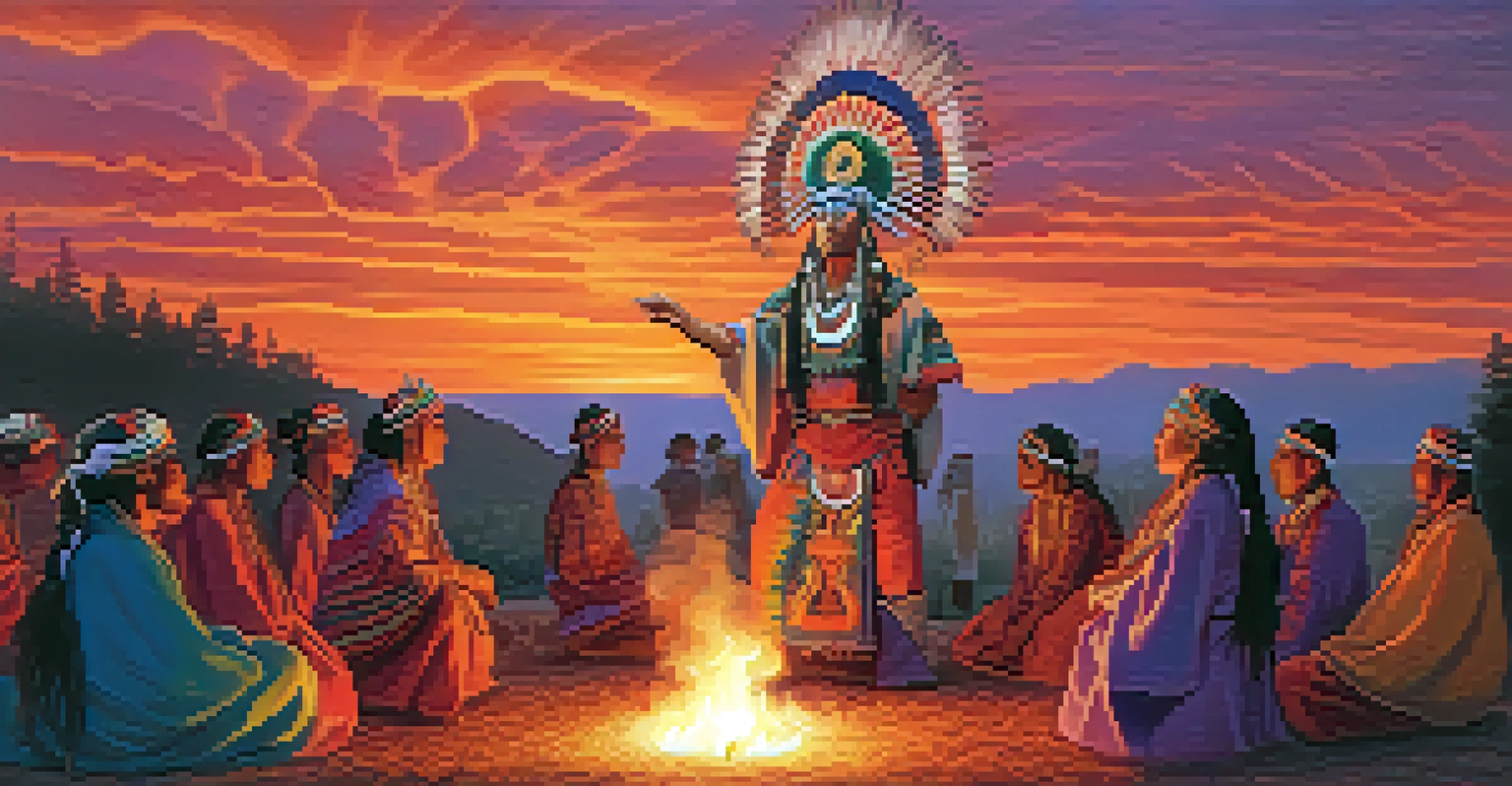Exploring the Role of Music in Shamanic Spiritual Practices

Understanding Shamanism and Its Spiritual Practices
Shamanism is a spiritual practice rooted in ancient traditions, where shamans act as intermediaries between the human and spirit worlds. These practitioners often embark on journeys to heal individuals or communities, seeking guidance from spirits through various methods. Music plays a vital role in these journeys, serving as a tool to facilitate deeper states of consciousness and connection.
Music is the shorthand of emotion.
At its core, shamanism emphasizes the interconnectedness of all beings, and music serves as a universal language that transcends cultural boundaries. The rhythms and melodies used in shamanic practices evoke emotional responses, enabling participants to tap into their feelings and experiences. This emotional journey is essential for healing and transformation.
By understanding the foundational aspects of shamanism, we can appreciate the significance of music within these practices. It’s more than mere background noise; it’s a powerful medium that enhances the healing process and fosters a sense of community among participants.
The Importance of Rhythm in Shamanic Music
Rhythm serves as the heartbeat of shamanic music, often mimicking the natural rhythms of life. It creates a steady pulse that helps participants enter trance states, allowing them to explore their inner worlds. This rhythmic foundation is not just about tempo; it’s about creating an environment conducive to spiritual exploration.

Drumming is a predominant form of rhythmic music in shamanic practices. The repetitive beats of the drum can induce altered states of consciousness, acting as a bridge to the spiritual realm. For many, this experience can feel like a dance with the divine, where the boundaries between the physical and metaphysical begin to blur.
Music Enhances Shamanic Healing
Music serves as a powerful medium in shamanism, facilitating healing and fostering community among participants.
The significance of rhythm in shamanic music highlights its role in spiritual journeys. As participants surrender to the steady beats, they often report deeper connections with their inner selves and the spirits they seek guidance from. This rhythmic entrancement is a crucial element of the transformative power of music in shamanism.
Instruments Used in Shamanic Music
Various instruments play a pivotal role in shamanic music, each chosen for its unique sound and cultural significance. Traditional instruments like drums, rattles, and flutes are commonly used to create the soundscapes that accompany shamanic journeys. Each instrument contributes to the overall atmosphere, enhancing the emotional and spiritual experience.
The soul is the voice of the body's music.
For instance, the deep, resonant sound of a drum can evoke feelings of grounding and stability, while the ethereal notes of a flute may inspire feelings of transcendence and freedom. These sounds not only support the journey but also resonate with the energies present during the ritual. This synergy between instrument and intention is vital in shamanic practices.
Exploring the variety of instruments allows us to appreciate the complexity of shamanic music. Each instrument serves a purpose, guiding participants through different emotional landscapes, ultimately leading them toward healing and insight.
The Role of Song in Shamanic Healing
Songs, or 'icaros,' are integral to shamanic healing practices, often serving as powerful tools for invoking spirits and setting intentions. These melodic chants carry specific meanings and energies, helping to guide the shaman and participants through their spiritual journeys. The power of song lies in its ability to convey messages that resonate at a deep, often unconscious level.
In many cultures, shamans learn these songs from the spirits themselves, believed to be gifted during trance states. This connection creates a sacred bond between the shaman and the spirit world, reinforcing the transformative process of healing. Participants often describe feeling uplifted and transformed by the power of these songs during rituals.
Rhythm Induces Spiritual Trances
The steady pulse of rhythm in shamanic music helps participants enter trance states, allowing for deeper introspection and connection with the spirit world.
The use of song in shamanic practices exemplifies the profound connection between music and spirituality. By blending melody with intention, shamans create a unique experience that fosters healing and deep personal insight.
Cultural Variations in Shamanic Music
Shamanic music varies significantly across cultures, each with its unique sounds, instruments, and practices. Indigenous cultures from North America to Siberia have developed distinct musical traditions that reflect their environments and spiritual beliefs. These variations offer a rich tapestry of sounds that enhance the shamanic experience, providing diverse pathways to the spirit world.
For example, Native American shamans often use drums and flutes, while Siberian shamans may employ throat singing alongside traditional instruments. Each culture's music reflects its values and understanding of the spiritual realm, showcasing the deep interconnection between music and identity. This diversity enriches the global understanding of shamanic practices.
By exploring the cultural variations in shamanic music, we gain insight into the universal themes of healing and spiritual connection. Each tradition invites us to experience the world through a different lens, ultimately reminding us of our shared humanity.
Music as a Tool for Personal Transformation
Engaging with music in shamanic practices can lead to profound personal transformations. As participants immerse themselves in the rhythms, songs, and sounds, they often find themselves confronting deep-seated emotions and experiences. This process can be both cathartic and enlightening, fostering growth and healing.
Many individuals report that the music allows them to access parts of themselves they may have long neglected. Whether it’s through the steady beat of a drum or the soaring notes of a flute, the music serves as a catalyst for introspection and self-discovery. It’s this transformative power of music that draws many to shamanic practices.
Diverse Cultural Shamanic Traditions
Shamanic music varies across cultures, reflecting unique spiritual beliefs and practices that enrich the global understanding of healing and connection.
Ultimately, the role of music in personal transformation is about creating a safe space for exploration. By engaging with these musical elements, participants can navigate their inner landscapes and emerge renewed, with a greater understanding of themselves and their place in the universe.
Conclusion: The Enduring Legacy of Music in Shamanism
The relationship between music and shamanic practices has endured through centuries, proving its significance in spiritual and healing traditions. Music transcends time and culture, uniting people in their quest for connection and understanding. This enduring legacy is a testament to the power of music as a spiritual tool.
As we explore the role of music in shamanic practices, we uncover its ability to facilitate healing, transformation, and connection. It invites us to reflect on our own experiences and the ways in which music can enrich our spiritual journeys. The melodies and rhythms remind us that we are part of something greater than ourselves.

In embracing the role of music in shamanic practices, we celebrate the universal human experience of seeking connection, healing, and understanding. Whether through drumming, singing, or simply listening, music continues to be a vital force in our spiritual lives.